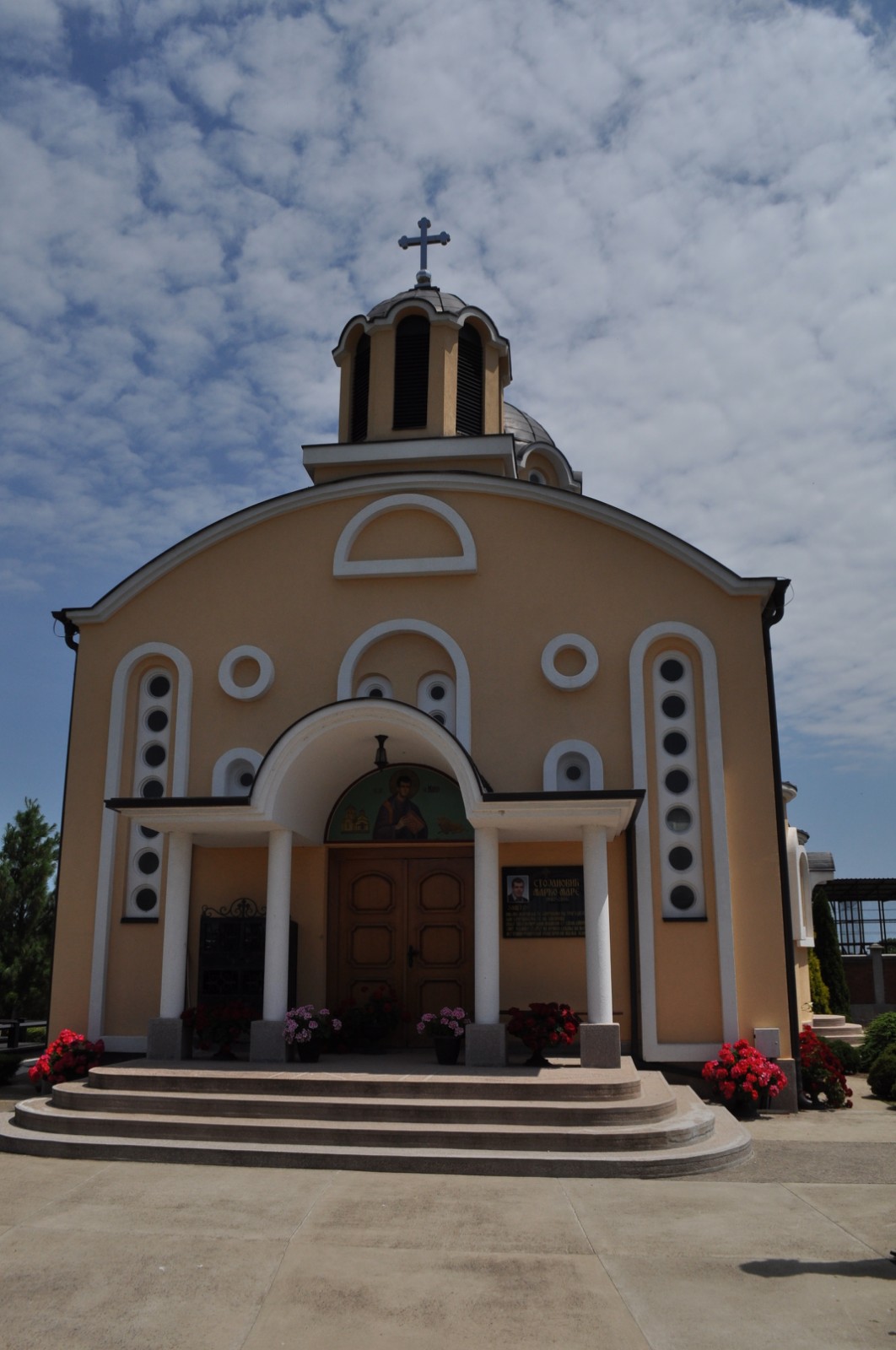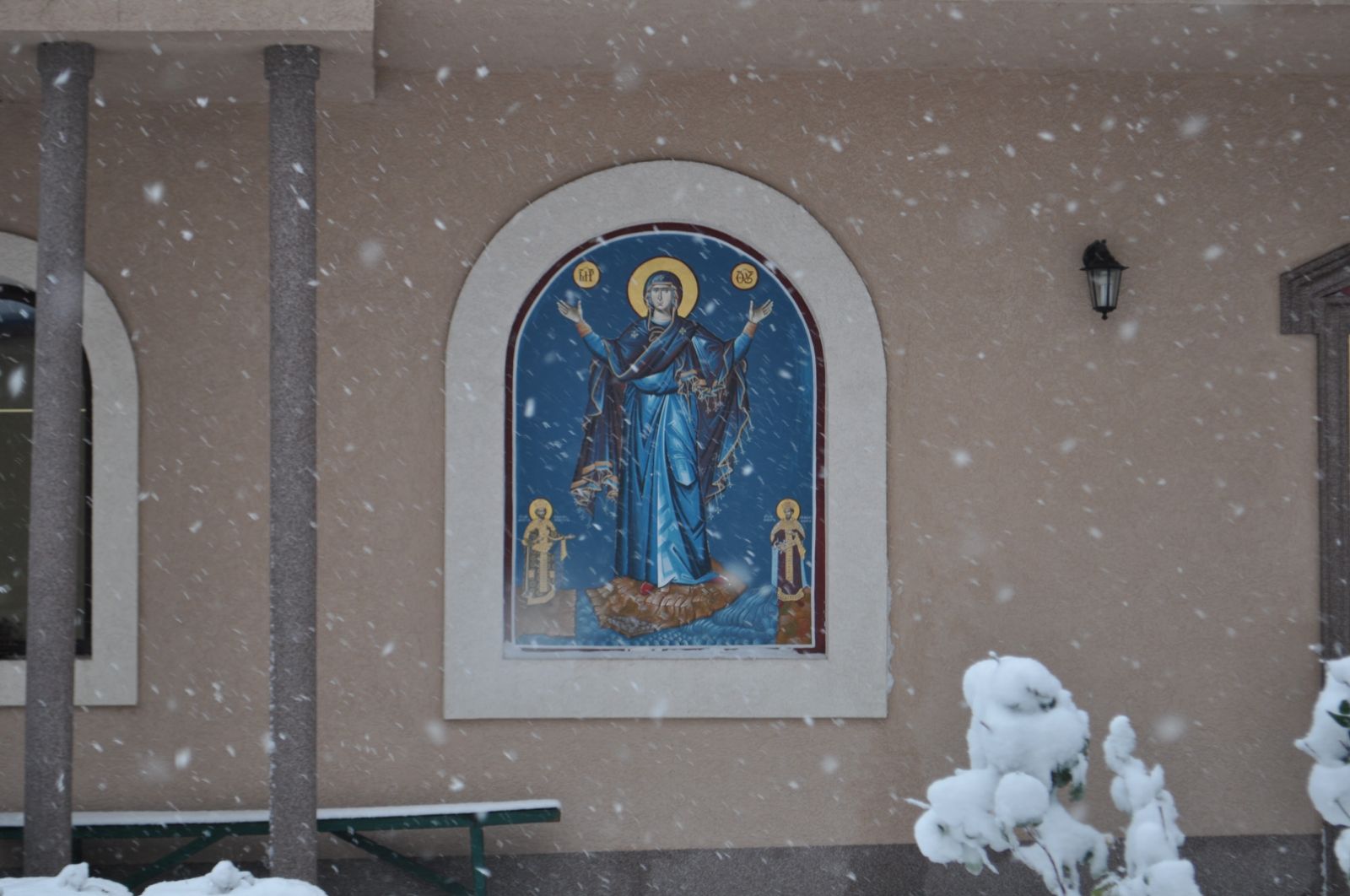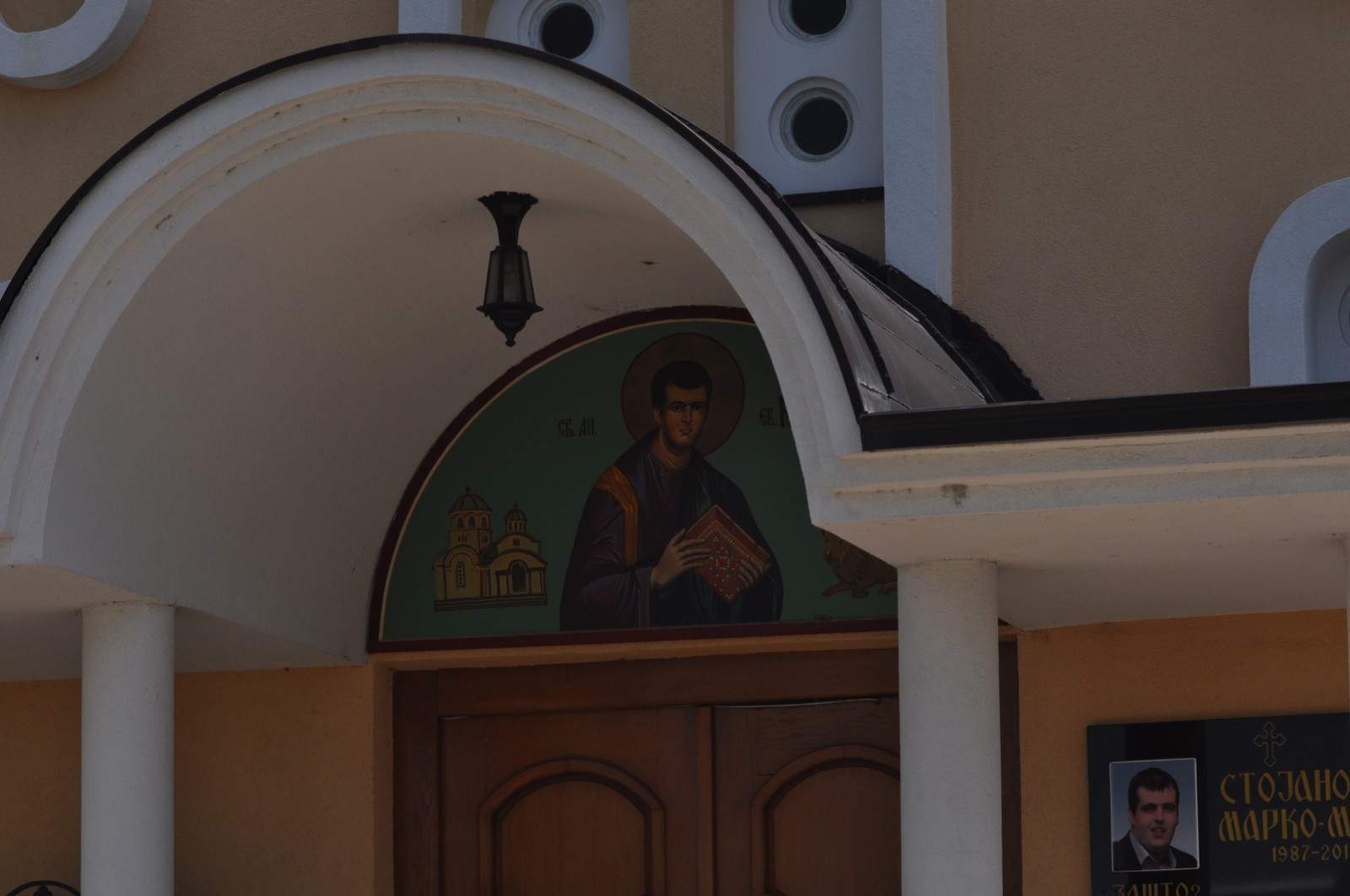The church is an institution related to the faith and practice of Christianity. Christianity is a monotheistic religion based on the teachings of Jesus Christ and his teachings. Orthodoxy is one of the three main Christian schools, along with Catholicism and Protestantism. The Serbian Orthodox Church is a national Orthodox church that is included in the Orthodox Church. It has a long history and tradition in Serbia and has a significant influence on the cultural and spiritual life of the Serbian people.

The Serbian Orthodox Church is also one of the oldest and most traditional Orthodox churches in the world, with a long history dating back to early Christianity. It is known for its rich liturgy and rich history of Christian art and architecture. The Orthodox Church deals not only with spiritual, but also with social issues and has a significant impact on the lives of its believers.
In Serbia, the Serbian Orthodox Church has a special place in cultural and national history. It is part of national tradition and memory, and is often associated with national and cultural identity. The Serbian Orthodox Church has a large number of temples and churches throughout Serbia and its surroundings, and its rich historical and cultural traditions are a source of pride and praise for many believers.

In short, the Serbian Orthodox Church plays a significant role in the lives of many people in Serbia and beyond, as part of the Orthodox tradition and Christian teachings. Its rich heritage and historical and cultural heritage are a source of inspiration and confidence for many believers and form an important part of Serbian cultural and spiritual heritage.

The Serbian Orthodox Church also plays a significant role in humanitarian work, helping the needy and supporting various forms of charitable work. It also plays a significant role in education, supporting various schools and educational programs to help develop and educate the next generation.

However, the Serbian Orthodox Church is not without controversies and challenges. Like other religions and churches, it was faced with various political and social issues, as well as intra-ecclesiastical problems. However, believers continue to respect and appreciate its heritage and role in their lives, making the Serbian Orthodox Church an important part of the history and culture of Serbia and the region.

In short, the Serbian Orthodox Church is an important institution for many believers in Serbia and beyond, playing a significant role in spiritual, cultural and social life. Her rich heritage and historical and cultural traditions are a source of inspiration and trust, and her role in humanitarian work, education and support of believers makes her an important part of the cultural and spiritual heritage of Serbia and the region.
In addition, the Serbian Orthodox Church also plays an important role in interreligious relations. As an Orthodox church, it has close ties with other Orthodox churches around the world, as well as with other Christian churches. It strives to promote peace and tolerance between different religions and denominations, and to help in understanding and cooperation between different communities.
However, the Serbian Orthodox Church also faces challenges from the other side. There used to be tensions between the Serbian Orthodox Church and other religions, including those with Islamic and Catholic traditions. However, in recent decades, many efforts have been made to overcome these tensions and to promote interreligious understanding and cooperation.
In short, the Serbian Orthodox Church has an important role in interreligious relations, striving to promote peace, tolerance and understanding between different religions and denominations. Although there have been tensions in the past, many efforts have been made to overcome these tensions and to create better understanding and cooperation between different communities.

The separation of the Christian Church into Catholic and Orthodox, known as the Great Schism, took place in 1054. The reason for the separation was various theological and political differences, including different interpretations of the authority of the papacy and the Christian faith.

In the Balkans, the dominance of the Orthodox Church dates back to the Middle Ages, when many countries of the Balkan Peninsula became Orthodox. Orthodoxy remained the dominant religion in many Balkan countries, including Serbia, Montenegro, Macedonia, Bulgaria, Greece and others.

However, in recent decades, the number of believers in the Catholic Church in the Balkans has increased, which has led to an increase in the number of Catholic churches and schools. Also, inter-religious tensions are still present in some countries, but many efforts have been made to overcome these tensions and to create better understanding between different religions.

In short, the separation of the Christian Church into Catholic and Orthodox occurred in 1054 due to various theological and political differences. In the Balkans, Orthodoxy is the dominant religion, although the number of believers in the Catholic Church has increased in recent decades. Inter-religious tensions are still present in some countries, but many efforts are being made to overcome these tensions and to create better understanding between different religions.

The Serbian Orthodox Church is one of the oldest and most important Orthodox churches in the world. It was formed in the 9th century and has a long and complex history, which was connected with the political and cultural development of Serbia.
Throughout its history, the Serbian Orthodox Church has played a key role in the identity of the Serbian people and in preserving its cultural heritage. It also played a significant role in the country's political life, especially during periods of great historical change.




Today, the Serbian Orthodox Church has a great influence on the lives of many people in Serbia and throughout the Balkans, as well as the Serbian diaspora around the world. It is also one of the largest and most important Orthodox churches in the world and has a significant number of believers in many countries.
In short, the Serbian Orthodox Church is one of the oldest and most important Orthodox churches in the world. It plays a key role in the identity of the Serbian people and in preserving their cultural heritage, and today it has a great influence on the lives of many people in Serbia and throughout the Balkans.
It is not possible to precisely determine the exact number of people who identify themselves as Orthodox or Catholic in the world. However, according to some estimates, approximately 200 million people worldwide identify as Orthodox, while Catholics make up about 1.2 billion people. These figures are only estimates and vary from source to source, and precise statistics are not always available in all countries.
It should be noted that these figures also include people who identify as Orthodox or Catholic, but do not practice their faith regularly. Therefore, the exact number of believers in these churches may be lower than these estimates.
The church has great importance and significance for the Serbian people. It is considered one of the main factors in the formation and maintenance of Serbian national and cultural identity. Throughout its long history, the Serbian Orthodox Church was present at all important moments in the life of the Serbian people, from its formation until today, and played a significant role in preserving its culture, traditions and beliefs.



The church is also considered a place where people gather to celebrate their faith and connect with their community. Many people in Serbia and throughout the Balkans believe that the church is important for their spiritual and moral guidance, and it also plays an important role in humanitarian and social activities.
In short, the church has great importance and significance for the Serbian people as one of the main factors in the formation and maintenance of national and cultural identity, as a gathering place for spiritual and moral leadership, and through its humanitarian and social activities.



The Serbian Orthodox Church has had many attacks and difficult moments in its long historical journey, including conflicts and wars with neighboring countries, religious persecutions, and other troubles. Although exposed to many challenges, she still managed to survive and continue with her mission.
One of the most difficult moments in the history of the Serbian Orthodox Church was the time of the Ottoman Empire, when the church was subjected to violence and persecution. Many temples and churches were destroyed during those years, and believers were forced to hide and live illegally.

However, despite these challenges, the Serbian Orthodox Church managed to survive and continue with its mission. She played an important role in preserving Serbian culture, tradition and beliefs, and in shaping national identity. Today, the Serbian Orthodox Church has a large number of believers worldwide, and continues to serve as a place of gathering and spiritual and moral guidance.
In short, although the Serbian Orthodox Church has gone through many difficult moments and attacks in its long historical journey, it still managed to survive and continue with its mission, playing an important role in the life of the Serbian people.


There are many Orthodox churches and monasteries on the Balkan Peninsula. In Serbia, for example, there are hundreds of Orthodox temples and monasteries, including some of the most famous historical cultural monuments, such as the Hilandar and Studenica monasteries.
Also, there are a large number of Orthodox churches and monasteries in Montenegro, including Cetinje Monastery, Ostrog Monastery, and Morača Monastery. There are also a large number of Orthodox churches in Bosnia and Herzegovina, including Tvrdoš Monastery, Banja Luka Cathedral, and Gračanica Monastery.



The frequency of Orthodox churches and monasteries in the Balkans indicates their importance and influence in the region, as well as the long history and tradition of Orthodox Christianity in these areas. All in all, there are a large number of Orthodox churches and monasteries throughout the Balkan Peninsula, which indicates their importance and importance in the lives of believers.

It is not clearly defined which is the oldest church in the Balkans, because many historical sources and archaeological finds indicate the presence of churches and Christian settlements in different parts of the region since the early period of Christianity.
However, one of the oldest known churches in the Balkans is the Rotunda of St. Georgia in Skopje, North Macedonia. This church is traditionally considered one of the oldest Christian churches in the Balkans, and was built in the 4th century.
Also, in Serbia there is the Kuveždin monastery, considered one of the oldest Orthodox monasteries in Europe. The monastery dates back to the 12th century, and its frescoes and architecture are important examples of Serbian art and architecture from the Middle Ages.
In short, there are many old churches and monasteries in the Balkans, and it is not easy to choose one as the oldest. However, the Rotunda of St. Georgija in Skopje and Kuveždin Monastery are two examples of old churches that were considered important historical monuments in the Balkans.

Conclusion:
The Serbian Orthodox Church has a long and complex history, which is closely connected with the history of the Serbs and the Balkans. As one of the oldest Orthodox churches, the Serbian Orthodox Church plays an important role in the lives of many Serbs, as well as in national identity.
Lesson:
Studying the history of the Serbian Orthodox Church helps to better understand the cultural and historical heritage of the Serbs and the Balkans, as well as how important the church has been in the lives of many people throughout history. Also, historical lessons show how important it is to protect and preserve monuments of culture and history such as old churches and monasteries, which are important for the heritage and identity of the nation.






Congratulations @sreten! You have completed the following achievement on the Hive blockchain And have been rewarded with New badge(s)
Your next target is to reach 40 posts.
Your next target is to reach 500 upvotes.
You can view your badges on your board and compare yourself to others in the Ranking
If you no longer want to receive notifications, reply to this comment with the word
STOPTo support your work, I also upvoted your post!
Check out our last posts:
Support the HiveBuzz project. Vote for our proposal!
Congratulations, your post has been added to Pinmapple! 🎉🥳🍍
Did you know you have your own profile map?
And every post has their own map too!
Want to have your post on the map too?